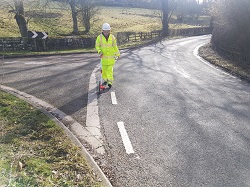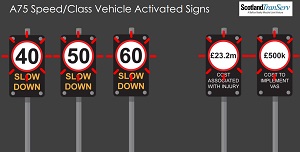

 DriveStart is a day-long scheme aimed at pre-drivers that comprises a variety of interactive sessions targeting issues highlighted in research as contributing to novice drivers’ high risk.
DriveStart is a day-long scheme aimed at pre-drivers that comprises a variety of interactive sessions targeting issues highlighted in research as contributing to novice drivers’ high risk.
Operated in conjunction with five Berkshire authorities, the scheme demonstrates how six year old scientifically-based and rigorously evaluated education programmes have a measurable impact on the behaviour of young drivers. Workshops are held for 30 people, who work in smaller groups.
Topics include hazard perception, distractions and impairment. Practical information covers licensing, selecting a driving instructor and test procedures. Games and demonstrations are used to encourage behavioural change techniques, including action planning, social comparison, problem solving and behavioural practice.
Course evaluation shows that participants appreciate interactivity where it reinforces positive behaviour, shows them how to engage in correct actions and provides coping mechanisms for challenging situations.
The principles behind the scheme are entirely replicable and with a cost of £65 per pre-driver it represents value for money for a scheme proven to deliver its objectives.
Judges' Comments
"What was particularly refreshing about this entry was that it was evidence-based in respect of behavioural change techniques. This entry clearly demonstrated what interventions did work, whilst recognising areas where the evidence was insufficient to show measurable benefits.
The programme appeared to work well with young people, and applied group dynamics and intelligence to improve safety outcomes for this group. The range of metrics used to measure
success, and the recording of evidence of change, as well as the statistical significance of that change, is unusual and particularly welcome."
In 2015, 59% of all Highways England’s Strategic Road Network (SRN) Killed and Seriously Injured casualties occurred on A-Roads. A-Roads have a significantly high number of casualties per mile travelled compared to motorways.
Accesses and priority junctions on the SRN form a crucial element of road users journey and remain the lowest cost way of connecting communities to the road network.

In 2015, 59% of all Highways England’s Strategic Road Network (SRN) Killed and Seriously Injured casualties occurred on A-Roads. A-Roads have a significantly high number of casualties per mile travelled compared to motorways.
Accesses and priority junctions on the SRN form a crucial element of road users journey and remain the lowest cost way of connecting communities to the road network.
The technical standards that govern the design requirements, including visibility, are over 25 years old. Highways England, have a licence requirement to support sustainable development which includes permitting applications for access and connections on to the single carriageway all-purpose trunk road network (APTR).
Over the recent years there has been a significant rise in the number of departures from standards submitted by designers and developers who cannot achieve visibility requirements Highways England wish to facilitate access to and from the SRN, without compromising safety for road users
Study Aims The aim of the road safety study was to:
Judges' Comments
"Excellent and efficient: by combining various data sources and technology to understand road safety issues on our network this was a really strong entry. The research synthesised data from LIDAR, collision and departures data and in doing so demonstrated how combining big data with robust analysis can provide the sector with a more intelligence on road safety issues. This has scope to improve junction safety and to make better use of scarce staff resources evaluating the impact of design in constrained locations, on strategic and local highway authority networks."
Scotland TranServ is the Trunk Road Management and Maintenance Company serving South West Scotland. Our Road Safety department works closely with our client, Transport Scotland to deliver traditional and innovative road safety initiatives that improve safety and save lives.

Scotland TranServ is the Trunk Road Management and Maintenance Company serving South West Scotland. Our Road Safety department works closely with our client, Transport Scotland to deliver traditional and innovative road safety initiatives that improve safety and save lives.
Further to detailed analysis of Killed or Serious Injured statistics and consultation with communities and key stakeholders along the A75 we identified a number of issues with speed, and in particular speeding HGV driving to and from the Irish ferry ports of Stranraer and Cairnryan.
It was clear to us that there was no one-size-fits all option to address the issues we were trying to address at junctions, through villages and on the trunk roads tight bends.
Judges' Comments
"The judges liked the excellent analysis and targeting that was undertaken of a hard-to-reach group; recognising that commercial pressures and tiredness contributed to problems with HGV use on the A75. There was limited wider implementation as their problem was unusual, but the principles of identifying and analysing a location-specific problem, and careful defining and targeting a solution to that problem, are universally relevant. In addition, many of the specific measures used could be readily used elsewhere."
Heavy goods vehicles (HGVs) are overrepresented in fatal collisions. HGVs make up less than 4% of the miles driven in London, but were involved over 60% of cyclist fatalities and 20% of pedestrian fatalities in 2015. This has led Transport for London (TfL) to focus on improving road safety in relation to HGVs and vulnerable road users (VRUs).

Heavy goods vehicles (HGVs) are overrepresented in fatal collisions. HGVs make up less than 4% of the miles driven in London, but were involved over 60% of cyclist fatalities and 20% of pedestrian fatalities in 2015. This has led Transport for London (TfL) to focus on improving road safety in relation to HGVs and vulnerable road users (VRUs).
Through onsite interviews, many HGV drivers are feeling the pressure of the constraints placed before them e.g. tacho restrictions, traffic congestion, strict construction time tables and the worry of VRU conflicts. The European Transport Safety Council indicates that driver fatigue is a significant factor in approx. 20% of HGV accidents with causal factors being; impatient during rush hour and feeling tense in traffic congestion.
TfL works with the London cycling communities who are lobbying the Mayor to remove HGVs from peak hour traffic times.
It is therefore important we maintain the welfare and safety of all road users by taking a balanced approach especially during construction.
Judges' Comments
"The judges admired the initiative which combines highway-based initiatives, with site-team actions, such as managing site work to get HGVs off the network promptly on arrival. This is a great programme of interventions that reduces the impacts of HGVs including those on both safety and the environment. Again, the wider implementation was limited as there was less practicality of similar measures being taken outside large cities, due to cost, lack of similar works scope and less HGV involvement in cycle crashes. However, the principle of highway authority actions and site team actions has wide scope for application."